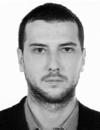The main goal of IDOS 2019 was to foster the exchange of knowledge regarding advances in practices and standards for medical radiation dosimetry used for therapy and imaging.
More than 400 delegates from 78 countries had the opportunity to discuss all aspects of the dosimetry chain, from its use in the standard labs to dose determination in the user beams. Core groups of experts representing international and professional organisations presented their work regarding updates of dosimetry codes of practice, new detectors and other dosimetry developments. This was a unique opportunity for discussion between scientists from the full range of institutions involved in the dosimetry chain (standard laboratory, metrology, research and medical facilities). IDOS 2019 comprised four days of educational courses, and plenary and topical sessions. It included proffered and poster contributions, as well as topical plenary discussions on a broad field of subjects. While it is impossible to convey the full breadth of the announcements and discussions, some important points are summarised here.
Overall, a steady advancement in dosimetry during the last 10 years was documented. This was exemplified in the invited lecture of the opening session, titled Half a Century of IAEA Radiation Dosimetry Developments, and a plenary session titled Dosimetry Audits in Radiotherapy: Past, Present and Future.
An extensive report was presented on the progress of the International Atomic Energy Agency (IAEA) Technical Reports Series (TRS)-398 review. This review will have a significant impact on low kilovolt X-ray reference dosimetry, and proton and ion reference dosimetry. Other presentations provided insight into the results of the joint research project RTNORM, funded by the European Association of National Metrology Institutes (EURAMET). A progress report was also offered into parallel work within the American Association of Physicists in Medicine (AAPM) on an addendum to the TG-51 protocol for electron-beam dosimetry. The addendum will enable the inclusion of the use of cylindrical chambers for low-energy electron beams in the protocol.
An overarching theme was an account of the changes brought about in all aspects of dosimetry by the review and update of key dosimetric data in the International Commission on Radiation Units and Measurements (ICRU) report No. 90 endorsed by the Consultative Committee for Ionising Radiation (CCRI).
An excellent presentation was offered on the IAEA TRS 483 code of practice by the Professor of Medical Radiation Physics at the Karolinska University Hospital, Pedro Andreo. The talk led to discussions of the practical implementation of the code.
A topical session regarding proton dosimetry included a report on the upcoming ICRU report No. 93 on the prescription, recording, and reporting of Light Ion Beam Therapy, among other interesting contributions.
An interesting session regarding MR-Linac dosimetry was included in the programme, even though this topic is not included in the TRS-398 update (and neither are delivery technologies that fall within the scope of TRS-483). Another thought-provoking topical session aimed to tackle the subject of dosimetry audits for new technologies.
Intriguing results were also reported regarding dosimetry in therapeutic nuclear medicine (e.g. the modelling of uptake and release of targeted alpha particles by single and small cancer-cell clusters for micrometastases dosimetry). The need for clinical dosimetry studies with increased accrual was stressed. The aim would be to establish dose-response relationships that would support individualised patient care. Such studies would contrast with dose-escalation studies that result in standardised yet generic protocols.
Brachytherapy was relatively under-represented. The main contributions discussed refinements of the high dose rate (HDR) 192Ir graphite calorimeter standard set by the National Physical Laboratory of the US; and the commencement of a European Metrology Programme for Innovation and Research (EMPIR)-EURAMET joint research project (PRISM-eBT) to analyse primary standards and measurement methods for X-ray emitting electronic brachytherapy devices.
Interested ESTRO members are encouraged to dig into the book of extended synopses available online (https://www.iaea.org/events/idos2019) to catch up with recent advances and keep track of ongoing and novel efforts.
The educational courses at the event covered a wide spectrum of topics. Of particular note were the courses regarding: estimation of uncertainties; dose considerations for imaging in radiotherapy; advances in brachytherapy dosimetry; and detectors and processes for quality assurance. The courses will be made available online through the IAEA Human Health Campus.
The meeting was highly successful, and a repetition is tentatively planned for 2026. We would recommend it to all clinical medical physicists in radiation oncology.
|

Núria Jornet
Servei de Radiofísica i Radioprotecció
Hospital de la Santa Creu i Sant Pau
Barcelona, Spain
|

Panagiotis Papagiannis
Medical Physics Lab., Medical School
National & Kapodistrian University of Athens
Athens, Greece
|